2,6-二氯-3-氰基-4-(三氟甲基)吡啶, 99%,2,6-Dichloro-4-(trifluoromethyl)nicotinonitrile
产品编号:西域试剂-WR175693| CAS NO:13600-42-5| MDL NO:MFCD00084977| 分子式:C7HCl2F3N2| 分子量:241.00
本网站销售的所有产品仅用于工业应用或者科学研究等非医疗目的,不可用于人类或动物的临床诊断或者治疗,非药用,非食用,
| 产品名称 | 2,6-二氯-3-氰基-4-(三氟甲基)吡啶, 99% |
|---|---|
| 英文名称 | 2,6-Dichloro-4-(trifluoromethyl)nicotinonitrile |
| CAS编号 | 13600-42-5 |
| 产品熔点 | 38 °C |
| 产品沸点 | 282.4±35.0 °C at 760 mmHg |
| 产品密度 | 1.6±0.1 g/cm3 |
| 产品闪点 | 124.6±25.9 °C |
| 精确质量 | 239.946884 |
| PSA | 36.68000 |
| LogP | 3.13 |
| 外观性状 | 白色固体 |
| 蒸气压 | 0.0±0.6 mmHg at 25°C |
| 折射率 | 1.505 |
相关文档
化学品安全说明书(MSDS)
下载MSDS质检证书(COA)
相关产品
| 危害码 (欧洲) | Xn: Harmful; |
|---|---|
| 风险声明 (欧洲) | R20/21/22;R36/37/38 |
| 安全声明 (欧洲) | S22-S26-S36/37/39 |
| 危险品运输编码 | 3439 |
| 海关编码 | 2933399090 |
Synonym: Section 2 - COMPOSITION, INFORMATION ON INGREDIENTS
Risk Phrases: 20/21/22 36/37/38 Section 3 - HAZARDS IDENTIFICATION EMERGENCY OVERVIEW
Harmful by inhalation, in contact with skin and if swallowed. Irritating to eyes, respiratory system and skin. Potential Health Effects Eye: Causes eye irritation. Skin: Causes skin irritation. Harmful if absorbed through the skin. Ingestion: Harmful if swallowed. May cause irritation of the digestive tract. Inhalation: Harmful if inhaled. Causes respiratory tract irritation. Chronic: Not available. Section 4 - FIRST AID MEASURES Eyes: Flush eyes with plenty of water for at least 15 minutes, occasionally lifting the upper and lower eyelids. Get medical aid. Skin: Get medical aid. Flush skin with plenty of water for at least 15 minutes while removing contaminated clothing and shoes. Ingestion: Get medical aid. Wash mouth out with water. Inhalation: Remove from exposure and move to fresh air immediately. If not breathing, give artificial respiration. If breathing is difficult, give oxygen. Get medical aid. Notes to Physician: Treat symptomatically and supportively. Section 5 - FIRE FIGHTING MEASURES General Information: As in any fire, wear a self-contained breathing apparatus in pressure-demand, MSHA/NIOSH (approved or equivalent), and full protective gear. Extinguishing Media: Use water spray, dry chemical, carbon dioxide, or chemical foam. Section 6 - ACCIDENTAL RELEASE MEASURES General Information: Use proper personal protective equipment as indicated in Section 8. Spills/Leaks: Vacuum or sweep up material and place into a suitable disposal container. Section 7 - HANDLING and STORAGE Handling: Avoid breathing dust, vapor, mist, or gas. Avoid contact with skin and eyes. Storage: Store in a cool, dry place. Store in a tightly closed container. Section 8 - EXPOSURE CONTROLS, PERSONAL PROTECTION Engineering Controls: Facilities storing or utilizing this material should be equipped with an eyewash facility and a safety shower. Use adequate ventilation to keep airborne concentrations low. Exposure Limits CAS# 13600-42-5: Personal Protective Equipment Eyes: Not available. Skin: Wear appropriate protective gloves to prevent skin exposure. Clothing: Wear appropriate protective clothing to prevent skin exposure. Respirators: Follow the OSHA respirator regulations found in 29 CFR 1910.134 or European Standard EN 149. Use a NIOSH/MSHA or European Standard EN 149 approved respirator if exposure limits are exceeded or if irritation or other symptoms are experienced. Section 9 - PHYSICAL AND CHEMICAL PROPERTIES Physical State: Solid Color: Not available. Odor: acrid odor pH: Not available. Vapor Pressure: Not available. Viscosity: Not available. Boiling Point: Not available. Freezing/Melting Point: 35 - 37 deg C Autoignition Temperature: Not available. Flash Point: Not available. Explosion Limits, lower: Not available. Explosion Limits, upper: Not available. Decomposition Temperature: Solubility in water: Specific Gravity/Density: Molecular Formula: C7HCl2F3N2 Molecular Weight: 241 Section 10 - STABILITY AND REACTIVITY Chemical Stability: Not available. Conditions to Avoid: Incompatible materials. Incompatibilities with Other Materials: Oxidizing agents, bases, amines. Hazardous Decomposition Products: Hydrogen chloride, chlorine, hydrogen cyanide, nitrogen oxides, carbon monoxide, carbon dioxide, fluorine, hydrogen fluoride gas. Hazardous Polymerization: Has not been reported Section 11 - TOXICOLOGICAL INFORMATION RTECS#: CAS# 13600-42-5 unlisted. LD50/LC50: Not available. Carcinogenicity: 2,6-Dichloro-4-(trifluoromethyl)nicotinonitrile - Not listed by ACGIH, IARC, or NTP. Section 12 - ECOLOGICAL INFORMATION Section 13 - DISPOSAL CONSIDERATIONS Dispose of in a manner consistent with federal, state, and local regulations. Section 14 - TRANSPORT INFORMATION IATA Shipping Name: NITRILES, SOLID, TOXIC, N.O.S.* Hazard Class: 6.1 UN Number: 3276 Packing Group: III IMO Shipping Name: NITRILES, TOXIC, N.O.S. Hazard Class: 6.1 UN Number: 3276 Packing Group: III RID/ADR Shipping Name: NITRILES, TOXIC, N.O.S. Hazard Class: 6.1 UN Number: 3276 Packing group: III Section 15 - REGULATORY INFORMATION European/International Regulations European Labeling in Accordance with EC Directives Hazard Symbols: XN Risk Phrases: R 20/21/22 Harmful by inhalation, in contact with skin and if swallowed. R 36/37/38 Irritating to eyes, respiratory system and skin. Safety Phrases: S 26 In case of contact with eyes, rinse immediately with plenty of water and seek medical advice. S 36/37/39 Wear suitable protective clothing, gloves and eye/face protection. WGK (Water Danger/Protection) CAS# 13600-42-5: No information available. Canada None of the chemicals in this product are listed on the DSL/NDSL list. CAS# 13600-42-5 is not listed on Canada's Ingredient Disclosure List. US FEDERAL TSCA CAS# 13600-42-5 is not listed on the TSCA inventory. It is for research and development use only. SECTION 16 - ADDITIONAL INFORMATION N/A |
|
~77% 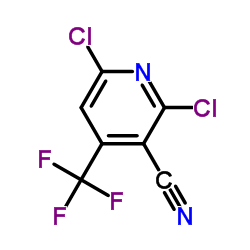
13600-42-5 |
| 文献:Jiang, Biao; Xiong, Xen-Nan; Yang, Cai-Guang Bioorganic and Medicinal Chemistry Letters, 2001 , vol. 11, # 4 p. 475 - 477 |
| 上游产品 1 | |
|---|---|
| 下游产品 2 | |

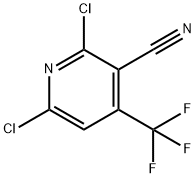
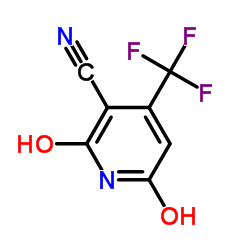
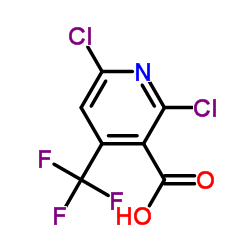
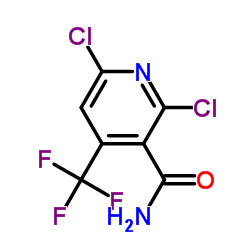





 浙公网安备 33010802013016号
浙公网安备 33010802013016号